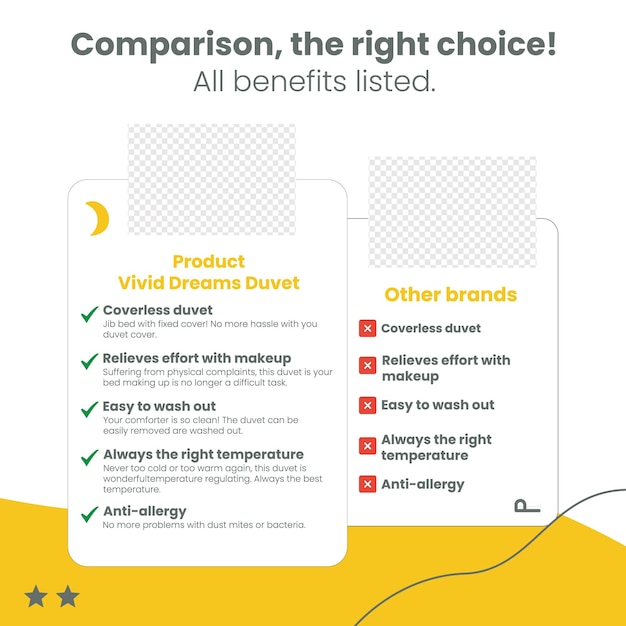Don’t Miss the Deadline: Maximize Your Benefits Package During Open Enrollment

Don’t miss the deadline for open enrollment; it’s your annual opportunity to review and adjust your benefits package, ensuring you have the right health, financial, and personal well-being coverage tailored to your evolving needs.
Open enrollment is a crucial time for employees to take control of their benefits. Don’t Miss the Deadline: Open Enrollment Strategies for Maximizing Your Benefits Package is essential to ensure you and your family have the right coverage for the upcoming year, considering changes in your health needs, financial situation, and personal priorities.
Understanding the Open Enrollment Period
The open enrollment period is an annual window when employees can elect or change their benefit options. Understanding this period is the first step in making informed decisions about your health and financial well-being.
What is Open Enrollment?
Open enrollment is the designated time each year, typically lasting a few weeks, when employees can enroll in or modify their employer-sponsored benefits. This includes health insurance, dental and vision plans, life insurance, and retirement savings plans.
During this period, you can assess your current coverage, review any changes to the plans offered, and make adjustments to ensure your benefits align with your needs.

Why is the Deadline Important?
Missing the open enrollment deadline can have significant consequences. In most cases, if you fail to enroll or make changes during this period, you’ll be locked into your current selections until the next open enrollment period, unless you experience a qualifying life event.
Qualifying life events include changes such as marriage, divorce, birth or adoption of a child, or loss of other coverage. These events allow you to make changes outside the open enrollment period, but it’s crucial to understand the specific rules and timelines associated with each event.
- Annual Opportunity: Open enrollment is your yearly opportunity to tailor your benefits.
- Avoid Being Locked In: Missing the deadline can leave you stuck with unsuitable coverage.
- Life Events Matter: Know how qualifying events can trigger special enrollment periods.
Open enrollment is usually the only chance to make adjustments without such a life event. It’s crucial for employees to prioritize and meet the deadline.
Assessing Your Current Benefits Needs
Before diving into the plan options, take a step back and assess your current needs. This involves evaluating your health, financial situation, and lifestyle to determine which benefits are most important to you and your family.
Health Insurance Considerations
If you and your family have ongoing medical needs, such as chronic conditions or regular prescriptions, you’ll likely prioritize comprehensive health insurance coverage. Consider the following:
- Premiums: What can you afford to pay each month or pay period for coverage?
- Deductibles: How much will you need to pay out-of-pocket before your insurance coverage kicks in?
- Co-pays: What are the costs for doctor visits, specialist appointments, and prescription medications?
- Network Coverage: Are your preferred doctors and hospitals included in the plan’s network?
Financial and Retirement Planning
Don’t overlook financial and retirement planning options during open enrollment. Many employers offer retirement savings plans, such as 401(k)s, with employer matching contributions. Furthermore, employee stock purchase plans provide an opportunity to buy company stock at reduced rates, while contributing to long-term prosperity.
Determine the plans that align with your long-term financial aspirations. Consider if your savings meet your needs. The answers to such questions can inform your decision-making.
Lifestyle and Family Changes
Consider any upcoming lifestyle or family changes that may impact your benefits needs. Are you planning to start a family, move to a new location, or change jobs? These events can influence the type and amount of coverage you require.
Assessing your changing needs helps you find the best benefits package. Life transitions merit the right type of insurance.
Exploring Your Benefits Options
Once you’ve assessed your needs, dive into the plan details. This involves understanding the different types of plans available and comparing their features, costs, and coverage levels to make an informed decision.
Types of Health Insurance Plans
There are several types of health insurance plans, each with its own set of features and trade-offs. The most common types include:*
- Health Maintenance Organization (HMO): HMO plans typically require you to select a primary care physician (PCP) who coordinates your care and provides referrals to specialists within the HMO network.
- Preferred Provider Organization (PPO): PPO plans offer more flexibility than HMOs, allowing you to see doctors and specialists both in and out of the network without a referral.
- High-Deductible Health Plan (HDHP): HDHPs have lower monthly premiums but higher deductibles. They are often paired with a health savings account (HSA), which allows you to save pre-tax money for healthcare expenses.
Evaluating Other Benefits
Explore benefits offers beyond health insurance. It’s common for an employer to offer various options, including but not limited to:*
- Dental and vision insurance: These plans cover routine dental and eye exams, as well as other dental and vision care services.
- Disability insurance: This insurance provides income replacement if you become disabled and unable to work.
- Life insurance: Also known as group term life insurance, this provides a monetary benefit to your beneficiaries in the event of your death.
- Flexible spending accounts (FSAs): Allow you to set aside pre-tax money for eligible healthcare and dependent care expenses.
Consider comparing plan costs and coverage to make a well-informed selection. Compare the costs of different benefits to maximize your monetary value.

Understanding the Costs and Coverage
It’s essential to understand the costs and coverage associated with each benefit plan option. This involves reviewing premiums, deductibles, co-pays, and out-of-pocket maximums, as well as understanding what services and treatments are covered.
Decoding the Fine Print
Insurance plans tend to have a lot of details to sift through that can often be overwhelming. However, it pays to understand the fine print and details of a plan.
Here are some key terms to look for and have an understanding of:
- Premium: The periodic payment you make to maintain your insurance coverage, typically deducted from your paycheck.
- Deductible: The amount you must pay out-of-pocket for covered healthcare services before your health insurance plan starts to pay.
- Co-pay: A fixed amount you pay for covered healthcare services, such as doctor visits or prescription medications.
- Co-insurance: The percentage of covered healthcare costs you pay after you’ve met your deductible.
- Out-of-pocket maximum: The maximum amount you’ll have to pay out-of-pocket for covered healthcare services in a plan year. Once you reach this limit, your health insurance plan pays 100% of covered costs.
Leveraging Employer Resources and Tools
Take advantage of the resources and tools your employer provides to help you make informed benefits decisions. These may include benefits guides, online portals, webinars, and one-on-one consultations with benefits specialists.
Benefits Guides and Online Portals
Most employers provide detailed benefits guides that outline the various plan options, coverage levels, costs, and eligibility requirements. These guides are often available in print or PDF format and can be a valuable resource for researching your options.
Many employers also offer online benefits portals where you can compare plans, estimate costs, and enroll in your chosen benefits. These portals often include interactive tools and calculators to help you make informed decisions.
Webinars and Consultations
Take advantage of live events to receive assistance with your decision-making.
Here are some examples of what employers offer:
- Webinars: Many employers host webinars during the open enrollment period to provide an overview of the benefits options and answer employee questions. These webinars are a great way to get up-to-date information and learn about any changes to the plans.
- One-on-one Consultations: Some employers offer one-on-one consultations with benefits specialists or financial advisors who can provide personalized guidance based on your individual needs and circumstances.
Using these resources helps you make sound decisions. Employer-sponsored programs offer guidance for individuals and families.
Planning for the Future
Open enrollment is not just about your immediate needs; it’s also an opportunity to plan for the future. Consider long-term health and financial goals when making your benefit selections.
Open enrollment can protect against unforeseen events and secure long-term financial stability. Consider your choices wisely, as they shape your future needs.
Retirement Savings Strategies
Take time to assess retirement plans for the long term. Consider your options with an eye on retirement planning. This helps you make the right choice.
Health Savings for the Long Term
Health savings accounts (HSAs) can also be a powerful tool for long-term health savings. By contributing pre-tax money to an HSA, you can build a tax-advantaged nest egg that can be used to pay for qualified healthcare expenses in retirement. Here are some benefits of focusing on long-term health savings:
- Tax Benefits: Contributions to an HSA are tax-deductible, and earnings grow tax-free.
- Portability: HSAs are portable, meaning you can take them with you if you change jobs.
- Investment Opportunities: Some HSAs offer investment options, allowing you to grow your savings over time.
| Key Aspect | Brief Description |
|---|---|
| 🗓️ Enrollment Period | Annual opportunity to enroll or modify benefits. |
| 💰 Assess Needs | Evaluate health, financial, and lifestyle needs. |
| 🔍 Explore Options | Understand plan types and coverage details. |
| 🤝 Employer Resources | Utilize guides, portals, and consultations. |
Frequently Asked Questions
▼
If you miss the deadline, you may be unable to enroll in or change your benefits until the next open enrollment period, unless you have a qualifying life event.
▼
Qualifying life events include changes such as marriage, divorce, birth, adoption of a child, loss of other coverage, allowing changes outside open enrollment.
▼
Compare premiums, deductibles, co-pays, network coverage, and covered services. Use your employer’s online portal or benefits guide for detailed comparisons.
▼
An HSA is a health savings account paired with a high-deductible health plan. It allows you to save pre-tax money for healthcare expenses, with tax-deductible contributions.
▼
Yes, employers often provide benefits guides, online portals, webinars, and consultations to help employees make informed benefits decisions.
Conclusion
Open enrollment is a critical annual opportunity to tailor your benefits package to meet your evolving health, financial, and personal needs. By understanding the open enrollment period, assessing your current needs, exploring your options, and leveraging employer resources, you can make informed decisions that maximize the value of your benefits and secure your future well-being.





